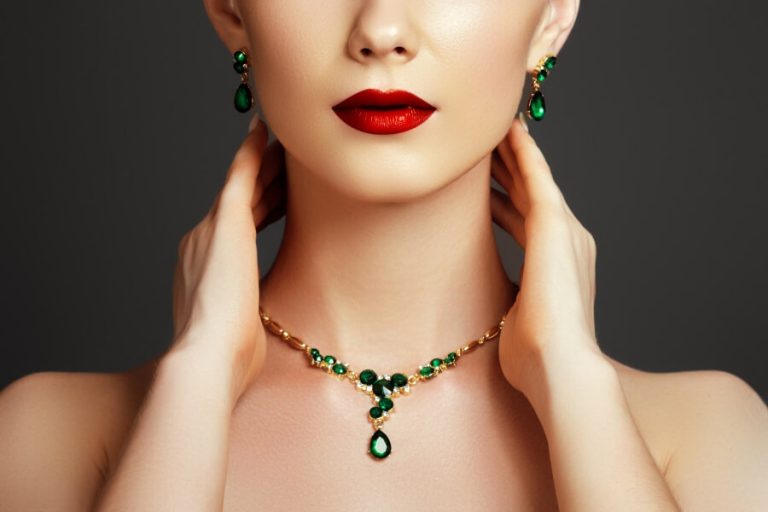Because China’s Boom of jewellery is driven by Young Chinese, Aka Gen Z
China’s largest jewellery retailer Chow Tai Fook relies on its young, patriotic, and affluent Generation Z group to buy “China-chic”, pieces to drive growth.
Need a cost effective TP (Tmall Partner) to sell in China?
We are an Official Tmall Partner e-commerce Agency. Our Services: E-Commerce, Search Engine Optimization, Advertising, Weibo, WeChat, WeChat Store & PR.
The pandemic has seen substantial growth in demand for jewellery featuring Chinese symbols like dragons and the phoenixes, which are the traditional emblems of emperors or empresses, from people born after 1995. Chow Tai Fook Managing Director Chan Sai-Cheong said that “[Gen Z] has the ability [to] pay] and is most willing (and able) to spend big.”

Many of them are not the breadwinners in their families. . . So they can have more fun than their parents.” Chan said that the younger generation was more patriotic and would rather spend on local brands than foreign brands that have had more prestige in the past. Guochao, which roughly translates to “China-chic”, has led to a boom in Chinese luxury brands. Chan said, “They love our traditional products, which can be combined with the style greatly.” According to the company, Millennials and Gen Z accounted for more than 56 percent of Chow Tai Fook’s “heritage line” sales between April and September 2021. Chow Tai Fook was founded in 1929. It began as a small shop of goldsmiths in Guangzhou, China. Today it is known as the Tiffany’s in the East. The pandemic has seen the company prosper. The total retail revenue of the Hong Kong-listed jeweller soared 79% between April and September to HK$44bn (US$5.7bn). During this period, revenue from mainland China rose 82% to HK$38bn. source FT
Chan stated that China’s “one-child” policy, which was implemented between 1980-2015 to reduce the nation’s population, contributed to growth. This policy resulted in Gen Z members growing up in middle-class households with disposable income. According to McKinsey, the cohort accounts for about 15% or 200m of China’s total population. Chow Tai Fook has more than 5,000 outlets in over 660 cities across mainland China. This expansion is happening even as President Xi Jinping pushes for his “common prosperity”, social reforms, and a crackdown on corruption. Chow Tai Fook plans to open over 2,000 outlets in the country by 2025. Many of these outlets will be located in third- and fourth-tier cities with a growing middle class. The company’s focus is on “affordable luxury”, or simple gold jewelry, such as rings, pendants, and bracelets. Most items are priced at Rmb10,000 (US$1,570). China’s luxury goods market has more than doubled between 2019-2021, representing approximately US$69bn (21 percent) of the global total.
It said that the growth occurred when luxury markets in Europe and Japan had only “partially recovered” and were still far from pre-Covid levels.
The demand for high-end jewellery from mainland China will only grow.
The growth “will continue over [few] years”, adding that “common prosperity” would drive sales as the middle classes grew and Gen Z began to shop online. “Gen Z likes different types and styles of jewellery. . . He said that their preference for Chinese cultural elements may rise in times of international tensions. “They have grown up in the digital age, and are therefore much more open to online shopping.”
Chow Tai Fook’s main rival, Hong Kong-listed Lukfook Jewellery also plans to open 350 new outlets this fiscal year. Many of these will be located in lower-tier cities. The company also plans to expand its e-commerce platforms to reach a younger generation. “We will increase our efforts to promote luxury jewelry products at an affordable price. . . Nancy Wong, Lukfook’s executive director, and deputy head executive, stated that the young consumer market is important.
“The mainland China market is our growth driver.” This comes as Chow Tai Fook’s and Lukfook’s sales in Hong Kong have slowed down. Although revenue has increased, it is still below pre-pandemic levels due to fewer mainland Chinese tourists who were the largest customers. The retailers still hope that a reopening of the border between Hong Kong, mainland China, will help to boost the city’s growth. This has been discussed for several weeks but has not materialized. Chow Tai Fook’s Executive Director Peter Suen said that a partial resumption in quarantine-free travel may not be enough to provide rapid growth [in sales]. . . But it is definitely a better position.
Jewelry Market 2022 Updates, Global Size, Growth Rate, Analysis and Forecast Report by Fortune Business Insights
As wedding banquets return in Hong Kong, gold jewellery sales rise by 30%
After-sales contractions of 80 percent, last year and 40% in 2019, the rise in sales is a result.
However, the price of gold fell by around 5% this year
According to industry professionals, gold jewellery sales soared by more than 30% this year in Hong Kong. This was due to the return of weddings after Covid-19 receded, and social distancing being relaxed.
After two years of decline, sales have risen. The pandemic that disrupted many weddings in the last year caused gold jewellery sales to fall by 80 percent. Due to the social unrest in the city, sales dropped 40% in 2019.
Haywood Cheung Takhay, president of the Chinese Gold and Silver Exchange Society (a local gold exchange operator), stated that there has been a strong rebound in gold jewellery sales in the second half of this year. This is because the government lifted restrictions on wedding banquets.
China’s brand-name jewelry market is only 15% of the total jewelry market, valued at $100 billion in 2020. There is still plenty of room for growth.
The demand for luxury accessories has increased in China, with the consumption of gold and diamond jewelry in the first quarter of 2021 exceeding pre-pandemic levels.
While Chinese jewelers may not have the same global recognition as Western brands, they are still a strong competitor in their own market. Chow Tai Fook, a Hong Kong conglomerate, has a higher market share than household names such as Tiffany & Co. source JIngdaily

Few names have risen to the top in fine jewelry. Think Cartier and its iconic red packaging. Or Chaumet which counts Josephine Bonaparte or Marie-Antoinette among its early clients.
Even though most jewelry in the world isn’t branded, luxury heavyweights still have a lot to cover. This is particularly true in China where branded jewelry accounts for only 15% of the country’s total jewelry market. In 2020, it was worth a staggering $100Billion.
Despite the fact that jewelry sales dropped in China at the beginning of the pandemics, the market for jewelry is back in full force. The total sales of jewels, gold, and silver rose 81.5 percent over the first quarter of 2021. Particularly, 191.1 tonnes of gold jewelry were consumed during this period. This is the highest quarterly level for seven years. Meanwhile, polished diamonds reached $722 million between January and March.
International brands are responding to this need by dropping exclusive collections and appointing high profile ambassadors.
How are China’s domestic brands doing? While they don’t have the same storied past and wide recognition as their Western counterparts, Chinese brands still dominate domestically in terms of market share. Chow Tai Fook commands 7.6% of the market. This makes it China’s biggest jeweler, surpassing household names like Tiffany & Co.
While Chinese brands have a lot of work ahead of them to win on the global stage, they do know a lot about local consumers. Jing Daily highlights the four most prominent Chinese jewelry manufacturers and explains how they shine within China’s unbranded jewelry market.
Chow Tai Fook is one of the most recognizable names in jewelry. Chow Tai Fook was founded in Guangzhou more than 90 years ago. It has since grown to be a fully-grown conglomerate with a market capitalization of $19.5 billion. This puts it on par for Tiffany & Co. when it acquired LVMH. This heritage has meant that the company’s bread is still its gold product. contributed more than half of its total revenues in 2020.
The Hong Kong-based jeweler has had a difficult time over the years. However, it recently recovered its footing and reported a 108 percent jump in its annual profits to $777 million last year. The company’s expansion in the Mainland was a key factor in its success, adding 741 retail outlets to its network for a total number of 4,591. This strategy isn’t innovative, as many luxury brands expanded their footprints in China during the pandemic. However, Chow Tai Fook’s focus on cities is very interesting.
To better understand the needs of customers, Chow Tai Fook has been working with local jewelers to establish franchise partnerships. Chow Tai Fook also launched a variety of initiatives to connect offline and online sales. These include cloud kiosks and a WeChat-based CRM platform. Customers can also order custom pieces directly from the factories. Chow Tai Fook has been increasing its social media presence in response to the growth of eCommerce in rural China. Gartner says that Chow Tai Fook has been one of the most successful digitally-growing brands, surpassing pure jewelry and watch brands like Tiffany and Bvlgari, according to mentions on Little Red Book, Douyin, and other sources.







